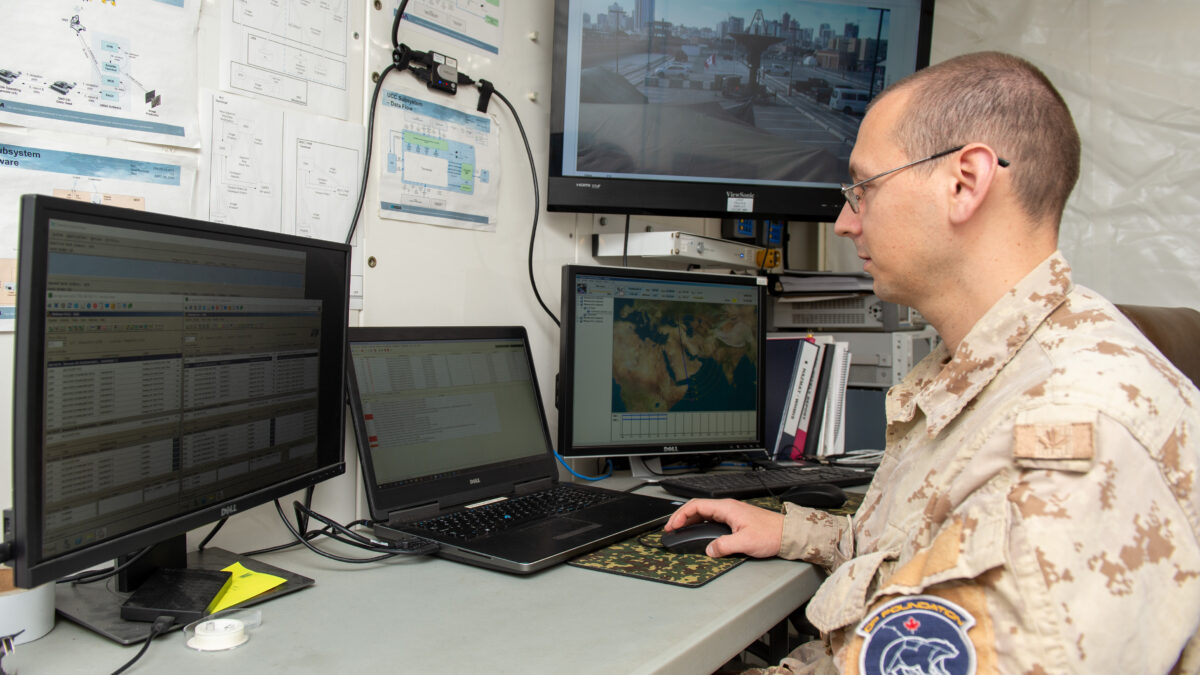The challenge of the sheer amount of C4ISR data available in evolving multi-domain (air, sea, space, land, cyber) and multi classification battlespace is driving the request from military leaders for new methods and ideas from industry partners to enable, optimize and integrate new command and control (C2) operational workflows.
This volume of data will drive commanders and their teams to depend on software-based AI and machine learning tools to help convert data to information to actionable intelligence. It’s clear that any workflows and behaviors that can be optimized at the hardware level to provide better integration and reduce information silos should be implemented as well. This can result in increases to the efficiency and effectiveness of intelligence process to compliment the software enabled C2.
Considering the physical limitations associated with traditional audio-visual (AV) and information technology (IT) architectures and legacy C2 systems, it makes sense for leadership to seek new ideas and approaches for signal management as part of the mission of enabling multi-domain operations.
Let’s describe a hypothetical incident. An alert is initiated by an aircraft after-burner detection sensor in theatre. The intended workflow is to immediately share the latitude, longitude and timing information with other operators and analysts in the C2 process to determine the threat level. Simply sending a message without knowing that the sensor information has been assimilated into the C2 threat response process creates a potentially risky scenario. Realizing that the target may go undetected for too long necessitates a physical action by the initiating operator, which may require temporarily leaving their post to walk over and confirm the forwarded information was received and understood. In the current legacy C2 environment, this might involve handing over a piece of paper!
This not an isolated scenario, but rather indicative of processes created to respond to current threat environments, using technology and tools designed for threats of the past. “Stove-piped” operator stations and the inability to collaborate and share information in real time can at least partly be solved in the AV/IT hardware layer today. To do so, a new approach is required, as typical mainstream AV and IT technologies are not designed for these types of secure C2 applications and are not efficient in delivering multiple sources of information when they are at multiple classifications.
The need for operators and analysts to collaborate with others, and the obstacles associated with the limitations of legacy C2 systems, have motivated the implementation of next-generation AV infrastructures that enable flexible and universal operator control and collaboration in multi-level security environments.
Scalable, fiber optic KVM (keyboard, video, mouse) and VDS (video distribution system) C2 infrastructures enable operators to access multiple computers, virtual machines, and networks at multiple security classification from their stations and collaborate with others efficiently. At the center of the system is a matrix switch accredited for use in multi-level security environments. In this model, most, if not all, computer and AV resources are housed in a secure IT rack room and are extended to the users using KVM hardware. With this capability, these resources may be pooled, shared, and accessed as needed by operators with permission to do so. This infrastructure can easily scale from tactical command posts to strategic command centers providing the benefit wherever necessary.
Any physical operator location can take on any combination of resources depending on mission requirements at any time. True “any-to-any” switching of any source to any destination (if authorized) is available, providing frictionless data access. A separate control system, which does not reside on any mission network, is used to enable secure “out of band” administration of the infrastructure.
This next-generation, multi-domain C2 infrastructure saves time and money, but more importantly, it allows defense, intelligence, and security organizations to share information more quickly among teams and be more responsive to rapidly changing mission requirements, enabling instant situational awareness and driving faster, better-informed decision making.
If you would like to learn more, please reach out to Charlie Jamieson, Advisor with Thinklogical, a Belden Brand, at charlie.jamieson@thinklogical.com

